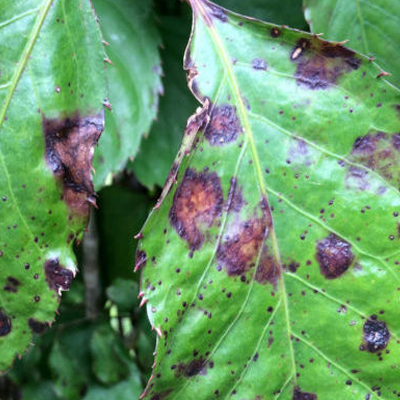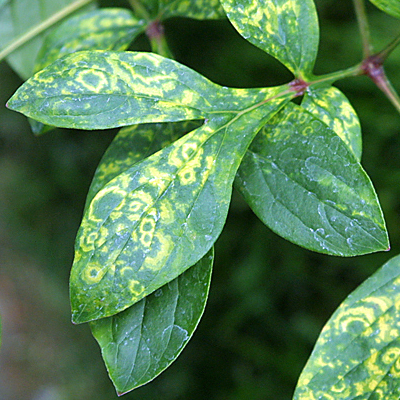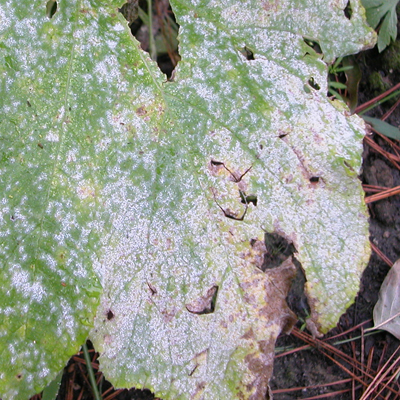Plants are susceptible to diseases, and proper care must be given to them to grow gloriously.
It is essential to know about common plant diseases so that you can take appropriate action at the right time and save the plants from dying. No one would want their hard work to go to waste because of insects, pests, or plant diseases.
Plants get affected by diseases when they are weak and unhealthy. Several factors that can make plants more prone to diseases could be wet or humid conditions ideal for bacteria, fungi, and viruses to grow. Humidity leads to the growth of molds, mildew and algae on plants.
Some of the common plant diseases are-

Powdery Mildew- Powdery Mildew can be identified as tiny white spots on the leaves that tend to spread, and ultimately the leaves turn yellow and die. It is caused mainly due to high humidity and cool temperature.
Root and Stem Rot- If you overwater the plants, the roots and stem can start to rot. The growth of fungi leads to the rotting of roots, which can spread to the entire plant.
Blight- Tomatoes and potatoes are most commonly affected by blight. In this disease, the leaves get spots, which gradually leads to fruit rot and stem lesion.
Damping Off- In the early stages, seedlings and young plants are prone to damping off. It occurs mainly due to over-watering, and the leaves start withering.
Rust- Rust is another common disease that causes spots and scars on the leaves. It is a fungal disease and can affect a wide variety of plants like Hollyhock, Roses, Fuchsias, Roses, and Chrysanthemums.
Some other diseases include Tobacco Mosaic Virus, Downy Mildew, Wilt disease, and Leaf Curl. Most of these diseases can be prevented if the plants are being grown in harmonious conditions and are getting ample nutrients, minerals, sunlight, and water to thrive. Several fungicides and other chemicals are available to treat plant diseases.
Plants are living organisms susceptible to various diseases that can hinder their growth, development, and productivity. Multiple factors, such as environmental conditions, pests, fungi, bacteria, and viruses, can cause these diseases. They can manifest in different ways, including wilting, discoloration, deformation, and stunted growth.

To maintain the health and productivity of gardens, farms, and landscapes, it's essential to have a deep understanding of common plant diseases. This knowledge can help implement effective management practices to prevent diseases from spreading and causing significant damage.
Fortunately, many plant diseases can be prevented or controlled by proper management practices such as maintaining soil health, watering, fertilizing, and pruning. Moreover, identifying the symptoms of common plant diseases is crucial for early detection and treatment to prevent severe damage.
This comprehensive guide explores some of the most prevalent plant diseases, their causes, symptoms, and management strategies. By the end of this guide, you'll better understand how to keep your plants healthy and productive.
Fungal Diseases
Fungal diseases are among the most common plant afflictions, affecting various plant species. These diseases are caused by multiple types of fungi that thrive in specific environmental conditions. One example is powdery mildew, a fungal disease characterized by satisfactory white growth on plants' leaves, stems, and flowers. Powdery mildew typically thrives in warm, humid conditions and can quickly spread throughout a garden if left unchecked.
Rust is a fungal disease that can quickly wreak havoc on plant foliage, causing the formation of unsightly orange or reddish-brown spots. This disease tends to thrive in high humidity and moisture conditions, making it essential to be vigilant about watering practices and ensuring proper airflow. Rust can spread rapidly and, if left unchecked, cause significant plant damage, leading to stunted growth and reduced yields. Therefore, taking proactive measures to prevent and manage this fungal disease is vital to keep your plants healthy and thriving.
Another fungal disease that plants may be susceptible to is damping-off, which can devastate seedlings. It causes them to collapse at the soil line, leading to the stunted growth or death of the plant. This disease is usually associated with overwatering and poor soil drainage, making it crucial to ensure that soil is well-drained and that seeds are not overwatered. By being vigilant and taking steps to prevent these fungal diseases, gardeners can help ensure their plants remain healthy and vibrant.
To manage fungal diseases effectively, it's essential to employ cultural practices such as proper sanitation, adequate spacing between plants, and timely removal of infected plant material. Applying fungicides labeled for specific fungal pathogens can help control outbreaks and prevent further spread. Organic alternatives, such as neem oil or copper-based fungicides, are available for those seeking environmentally friendly options.
Bacterial Diseases
Bacterial diseases pose another significant threat to plant health and productivity. These diseases are caused by various species of bacteria that infect plants through wounds, natural openings, or insect vectors. One example is bacterial leaf spot, which presents as dark, water-soaked lesions on plant foliage. Bacterial leaf spots can spread rapidly in wet conditions, making it essential to avoid overhead watering and provide adequate air circulation around plants.
Fire blight is a highly contagious bacterial disease that can cause severe damage to fruit trees, such as apples and pears. The disease gets its name from the striking visual effect it has on infected trees, as the foliage and branches wilt and turn black, resembling the aftermath of a fire. This destructive disease can spread rapidly throughout orchards, particularly during warm and humid weather conditions, posing a significant threat to the entire crop. The bacteria responsible for fire blight can also survive the winter in infected wood, making it a persistent problem for fruit growers.
Adopting a combination of cultural practices and control measures is essential to manage bacterial diseases in plants effectively. Cultural practices such as pruning infected plant parts, disinfecting pruning tools between cuts, and promoting overall plant health are crucial for disease prevention and control. In addition, applying copper-based bactericides or biological control agents can help suppress bacterial populations and prevent disease spread.
Integrated pest management (I.P.M.) strategies provide a holistic approach to managing bacterial diseases. This involves combining multiple control tactics, such as cultural practices and chemical and biological control, to provide a comprehensive and effective solution. By implementing I.P.M. strategies, plant growers can minimize the impact of bacterial diseases on the environment while ensuring healthy and thriving plants.
Viral Diseases
Viral diseases represent another group of plant pathogens that can cause significant damage to crops and ornamental plants. These diseases are caused by various viruses that can be transmitted through insect vectors, contaminated tools, or infected plant material. One example is the mosaic virus, which causes mottled or distorted foliage and stunted growth in infected plants. Mosaic virus can affect many plant species, including tomatoes, peppers, and cucurbits.

Another common viral disease is the tomato yellow leaf curl virus, primarily affecting tomatoes and other solanaceous crops. This disease causes yellowing and upward curling of leaves, leading to reduced yields and fruit quality. Whiteflies transmit the tomato yellow leaf curl virus, making proper pest management essential for prevention.
To manage viral diseases effectively, it's crucial to implement preventive measures such as planting virus-resistant cultivars, using virus-free planting material, and controlling insect vectors through cultural, biological, or chemical means. Additionally, practicing good sanitation by removing and destroying infected plants can help reduce virus reservoirs in the garden or field. While no chemical treatments are available to cure viral diseases, promoting overall plant health and vigor can help mitigate their impact.
In conclusion, understanding common plant diseases and their management strategies is essential for maintaining healthy and productive gardens, farms, and landscapes. Fungal, bacterial, and viral diseases are among the most prevalent plant afflictions, each presenting unique challenges and control methods. By implementing cultural practices, utilizing integrated pest management strategies, and staying vigilant for early signs of disease, gardeners and growers can effectively prevent and manage plant diseases while promoting sustainable agriculture and horticulture practices. With proper knowledge and proactive management, we can ensure our plant communities' continued health and vitality for generations.



















































